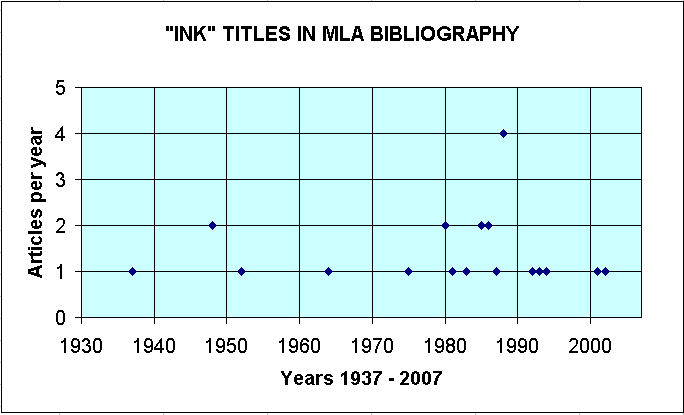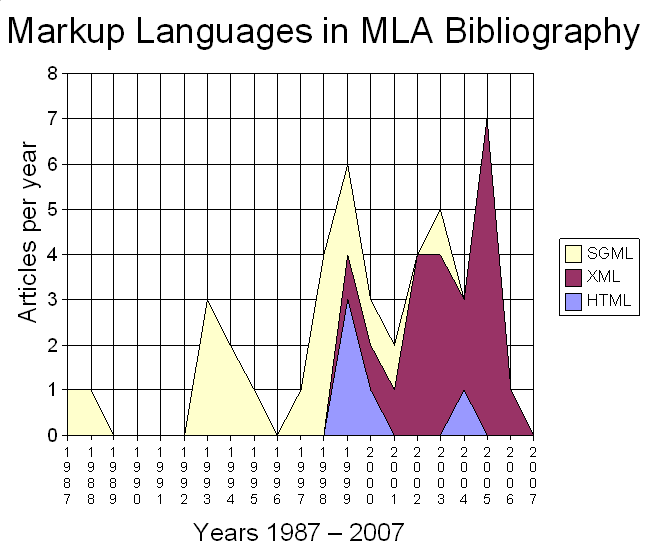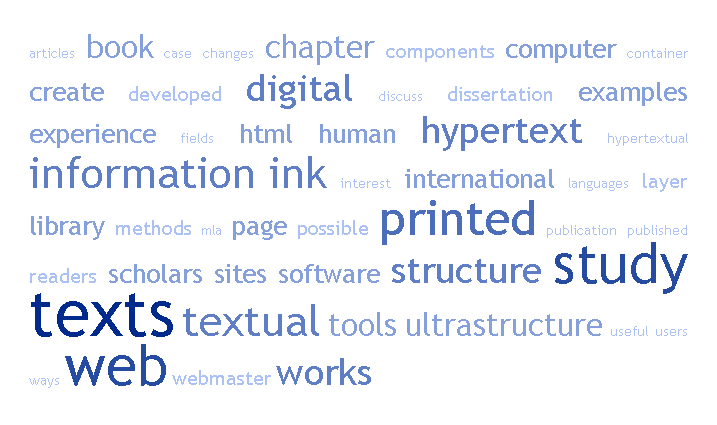Movement and Containment in Texts and Hypertexts
This is just a sample. To put it in context, visit Hypertextual Ultrastructures' home page for an abstract, the full Table of Contents, and a link to
the full text of my dissertation.
- Why the Most-Used Parts of the Web Are Studied Least
- Layers and Ultrastructure: Hypertextuality, Inside-Out
- What Are Printed Texts Made of, and Who Studies Ink?
- Paper Is to Screen as Ink Is to Software
- What Are Digital Texts Made of?
- Paper Is (Relatively) Stable, but the Web Rots: Web Pages Require Caretakers
- The Task of the Webmaster: Ultrastructure from the Perspective of the Participant-Observer
- Hypertexts as Real Texts
- Text, Hypertext, Move, Contain: Terminology and Notation
- Ultrastructure Creates the Hyper- Attributes of Hypertext
- Toward a Formalist Criticism of Hypertext
What Are Printed Texts Made of, and Who Studies Ink?
In investigating how printed texts, which have long been the focus of textual studies, differ from hypertexts, I'm interested less in surface-level behaviors (paper texts can't be hyperlinked) but for the structural bases of those behaviors (printed texts are made of ink and paper, which have definite physical limitations). I'm curious about the extent to which textual scholars have been curious about this:

Textual scholars haven't had much to say about ink, it seems, if you belive that the MLA Bibliography is the right place to look for studies of the physical building blocks of printed texts. It's probably the wrong place to look, since serious study of ink, for example, is more likely to require skill in chemistry than skill in human language. One of the right places to look is the Ink Corrosion project's site at http://inkcorrosion.org/prognosis/.
Paper Is to Screen as Ink Is to Software
Unlike ink, which has a physical nature best understood by physical scientists, the software that creates digital texts is made of words; expertise in human language might naturally be extended to include these human-created languages. Here, I've looked in the MLA Bibliography for studies of three markup languages commonly used in the creation of digital texts: SGML and its chlidren XML and HTML.

This is still just a trickle of studies; more are bound to be coming. What I wish I could do is link to the live MLA Bibliography here, so we can all easily check up on how this is changing. Unfortunately, only subscribers can search the MLA Bibliography, you'll have to go through your local public or University library.
